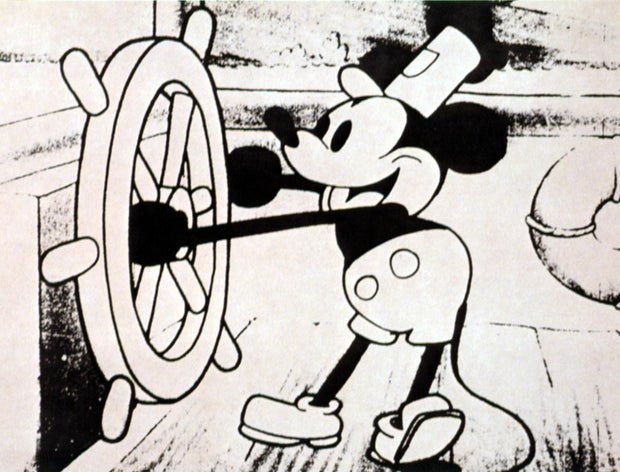▶ Watch Video: Mickey and Minnie Mouse set to enter the public domain on Jan. 1
The earliest versions of Mickey and Minnie Mouse now belong to the American people. The characters as they appear in the animated short films “Steamboat Willie” and “Plane Crazy” entered the U.S. public domain Monday, along with thousands of other works from 1928.
Legal experts at Duke University say the Walt Disney Company still retains the copyrights to later iterations of the iconic mice for the time being, as well as the trademarks, but people “are free to copy, share and build on” the 1928 depictions of the pair.

What is the public domain and how does it work?
“Public Domain Day” is observed annually on the first day of the year to mark the expiration of copyrights for older works. Laws and the length of protections vary by country.
Works published in 1928 were supposed to enter public domain in 2004, but after lobbying efforts by Disney and other copyright holders, Congress passed the 1998 Copyright Term Extension Act and added another 20 years of protections, according to Duke Law.
When a work goes into the public domain, it can legally be shared and repurposed without permission or fees. This can result in unexpected, if not humorous, adaptations of beloved material.
For example, when A.A. Milne’s “Winnie-the-Pooh” became public property in 2022, a horror film followed soon after with a slasher spin on the honey-obsessed bear.
This sort of creativity or novel take is what makes the public domain worth celebrating, Jennifer Jenkins, director of Duke’s Center for the Study of the Public Domain, said in a post on the center’s website.
“Think of all the films, cartoons, books, plays, musicals, video games, songs, and other works based on Greek mythology, or on the works of Shakespeare,” Jenkins said. “The ability freely to reinvent these works may spur a range of creativity, from the serious to the whimsical, and in doing so allow the original artists’ legacies to endure.”
What other works are now free for public use?
Tigger has joined his pal Pooh Bear in the land of public domain. The character first appeared in “The House at Pooh Corner,” whose copyright expired Monday.
Other notable works now in the public domain include J. M. Barrie’s “Peter Pan” play, the Hercule Poirot novel “The Mystery of the Blue Train” by Agatha Christie, and the silent film “The Circus” starring and directed by Charlie Chaplin.
Also going in is the D.H Lawrence novel “Lady Chatterley’s Lover,” and the Virginia Woolf novel “Orlando: A Biography.”
The music and lyrics to Cole Porter’s “Let’s Do It, Let’s Fall in Love” are also now public property.
The University of Pennsylvania maintains a digital catalog of U.S. copyright entries to verify if material is available for public use.
What major works will lose copyright protection in 2025?
Fans of Popeye the Sailor Man will have to wait another year for the opportunity to freely remix the spinach-eating seafarer.
Also going public in 2025 are René Magritte’s painting “The Treachery of Images,” the first Marx Brothers film, and the first English translation of Erich Maria Remarque’s “All Quiet on the Western Front.”







